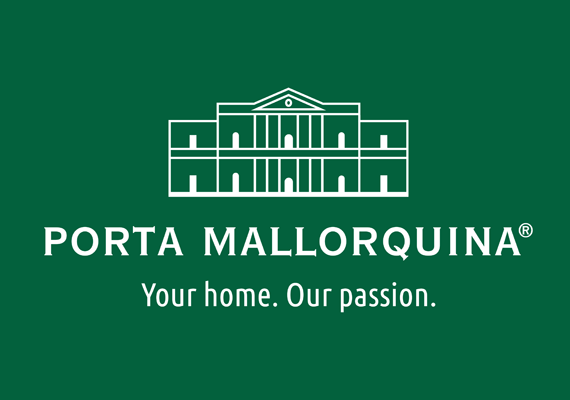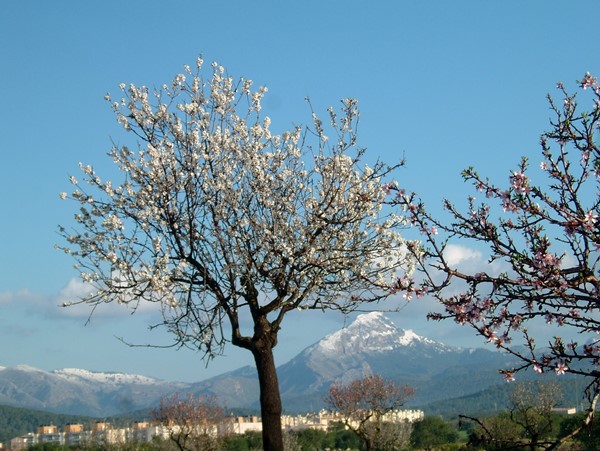The German Blog “Mallorca Talks” invited bloggers to the first Mallorca Blog Parade – an exciting story, which of course I wanted to be part of! There are two questions to answer: “What is Mallorca’s greatest treasure” and “Your ultimate Mallorca experience”. Here’s my own personal answers.
Contents
Mallorca’s greatest treasure
The whole world celebrates the wonders and treasures of Mallorca. These miracles are the pink and white blossoming almond trees in spring, the calas lapped by the azure waters in the summer, the brightly coloured trees in autumn by the Tramontana, the snow covered peaks which can sometimes be seen in winter at Puig Major.
The treasures of Mallorca can be admired throughout the year: the Gothic Cathedral and the Moorish Castle in Palma, the dreamy Erimatas on the mountains, the mighty castles and towers scattered across the countryside, the sleepy villages and the loud party mile area. But are these unique treasures only to be admired on holiday?
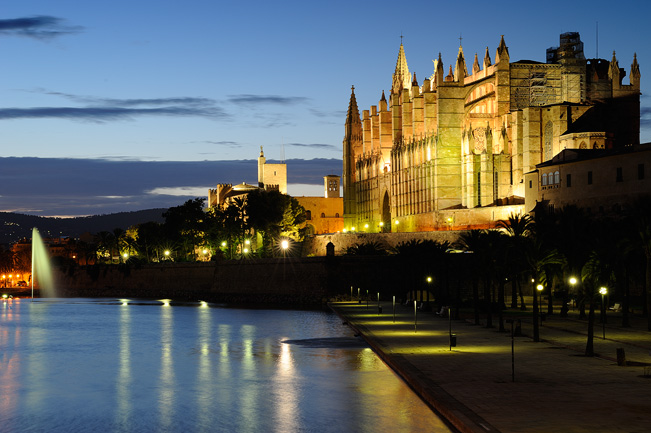
The cathedral is a landmark and certainly a treasure of Palma de Mallorca.
I actually know a treasure that is unique and not found anywhere else. My treasure hunt began quite comfortably and unspectacularly with a glass of wine. A Mallorcan friend asked me to get a good and cheap wine with the advice of a winegrower in Binissalem. I went there and met the wine producers on the outskirts of the village. I rang a large bell and the door was opened to me.
Legacy of the Romans – Mallorca wines
Huge wooden barrels were stored in the large cellar. I bought a large bulbous green three-litre bottle. The peasant turns on the faucet and let the golden shimmering wine flow into the bottle. The wine was good and I returned, like many villagers, to collect wine supplies. Meanwhile, I had made friends with the farmer. When I arrived once again with my big, bulbous bottle to soak in the large barrel, he took me by the hand and led me to a small basement next door. “Para los amigos especiales” he muttered conspiratorially. Honoured to be titled as a special friend, I followed him.
He showed me a shelf full of wine bottles. He took a bottle, opened it and poured the wine into two glass cups. We sat at a small table with two wicker chairs. “Bon profit” – for the good. We drank. He said “te gusta il vino” I said yes, and it was not a lie. Then he told me the history and mystery of the Mallorcan wine.
The Romans brought vines to the island. The locals took over the wine culture from the conquerors and have operated viticulture since that time. In the 19th century phylloxera devastated the vineyards throughout Europe. Mallorca was spared thanks to its “Weinpest” on the island. Therefore, there are still authentic vines and local wines that date back to Roman times. In Majorca little wine is produced. The vineyards around Santa Mary and Binnissalem are focal points of the Mallorcan wine production.
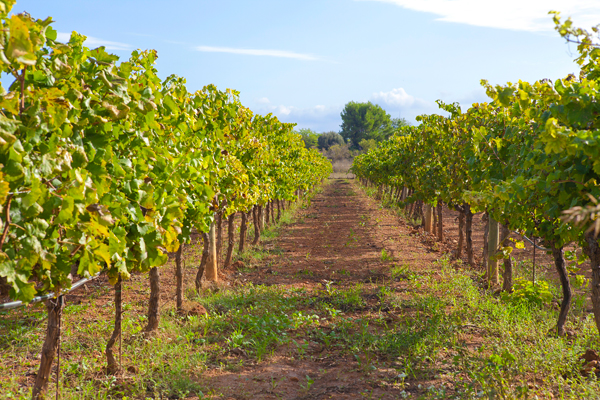
Vineyards in Binnissalem.
Today, the government monitor strict laws to protect great reputation and unique treasure of authentic vines to ensure they are not diluted by wine adulteration. When I asked our wine friend, “How old is your winery,” he did not know exactly but it was too long ago: “No se, pero muchos muchos años”. Just for fun, I said: “Probably from the time when the Romans first struck a Mallorcan’s head with a sword.” To which the wine producer laughed uproariously. When I came out into the fresh air, I realised, however, that Mallorcan wine is not only good, but also a higher percentage than the usual European wines.
My ultimate experience in Mallorca
When I cycled past the palace of the Count of Santa Ponsa some time ago with my Majorcan cyclist friends, Raffa told me the following story.
All the land and hills which were now enthroned by villas and pools, once belonged to the Count of Santa Ponsa. When Jaume I conquered Santa Ponsa and the Moors in 1229 with his knights, he gave his supporters land as a reward.
The nobles leased the land to farmers who cultivated the fields and paid rent to the landlords. In the 20s and 30s of the last century, when the lease income declined and the money claims of the Count became larger, the Count of Santa Ponsa borrowed money from Banker March as pledged his lands as security money. They say he got for 30 pennies for a square metre. When the payback period lapsed, the banker March conceded the land and sold it as building land. When I later read in the paper an overview of the ownership structure on the island, I was more than surprised.
52 percent of Mallorca once belonged to the March family. What happened to the Count of Santa Ponsa in the years after World War 1, happened to many other nobles. They lived in their mansions and leased the land for farming to farmers on the land. March offered more than the farmers generated and the nobles sold. About half of the country became March-country, every city has a Banca March – a family castle March – a Museo March. An ultimate realisation for me:
A Mallorca connoisseur will be a March connoisseur.
I wanted to know who was this March, which was once the third richest man in the world? Juan March was born in a modest house at night in October 1880 in the village of Santa Margarita. His father’s family had a meagre income from the pig and cattle trade.
The young Juan showed business skills very early. He stole a cigarette from his father at home, and then made his buddy pay a peso for three drags. Another feature of his character developed equally early. Juan went to a boarding school in Inca where he excelled through his amazing ability to outperform teachers in mental arithmetic. Juan, however, was not only superior to his classmates in mental arithmetic, but also in sex drive. Even as a 15-year-old he tried to rape a maid at the boarding school. Juan then had to leave the sacred institution. He then devoted himself to the tobacco smuggling, to which he remained true until his death. “Sex and money” were the leitmotifs of his life. Despite being married, he had countless lovers in his life.

Joan March Ordinas – Picture: Wikipedia
When his wife also took a lover, he killed him. Although he was charged with this offense, he always could escape the process through bribes. A reliable means was the fact that he had himself elected to parliament. March made big money when he got into the oil business, and ordered a major oil port in Mallorca. In the 1st world war he refuelled German U-boats at sea. Due to economic crimes he was then imprisoned for a year. He resided in a sophisticated single cell, where he received his business friends every day.
Juan March – the “Spanish Rockefeller”
On July 2, 1960 Juan March died, consoled by his faithful lover until the end. In the American press, a great obituary to the “Spanish Rockefeller” was written and the “New Yorker” quoted Marchs’ saying:
“I do not need a bank. The banks need me. “
March was the prototype of a self-made man who rose from humble circumstances in Mallorca into a world renown capitalist. The descendants of March no longer play an important role in the Spanish economy. There are some Mallorcans such as Juan Riu, that have worked their way up from waiter to hotel king. Not all islanders are multi-millionaires, but it is impressive how many are business-minded.
Mallorca Blog Parade
Click here for more beautiful items from Barbara’s Blog Parade (written in German)- a great idea!
http://kleinplanet311.com/2015/02/08/mallorquitis-die/
http://www.seniortraveller.de/2015/02/21/der-gr%C3%B6%C3%9Fte-schatz-mallorcas/
http://www.seniortraveller.de/2015/02/21/meine-mallorca-story/
http://www.ferngeweht.de/wandern-auf-mallorca
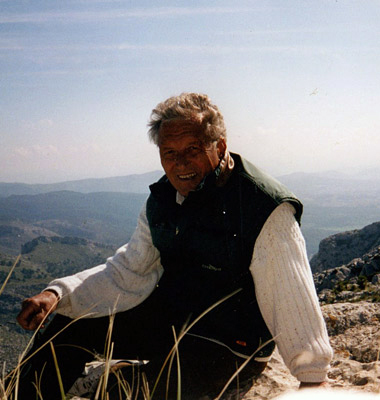
Author Dr. Wolfgang Hierl on the Alaró.
Dr. Wolfgang Hierl from Straubing (Bavaria) has known and loved Mallorca for over 40 years, he has owned a holiday rental in Calvia for about 20 years.
The passionate golfer has already explored Mallorca by bicycle and on foot, but his favourite corner still remains the southwest. Today, he spends at least 6 weeks a year on his favourite island.
The former high school teacher for German, history and geography is particularly interested in the history of Mallorca and knows many stories, legends and anecdotes from Mallorca’s colourful past.
